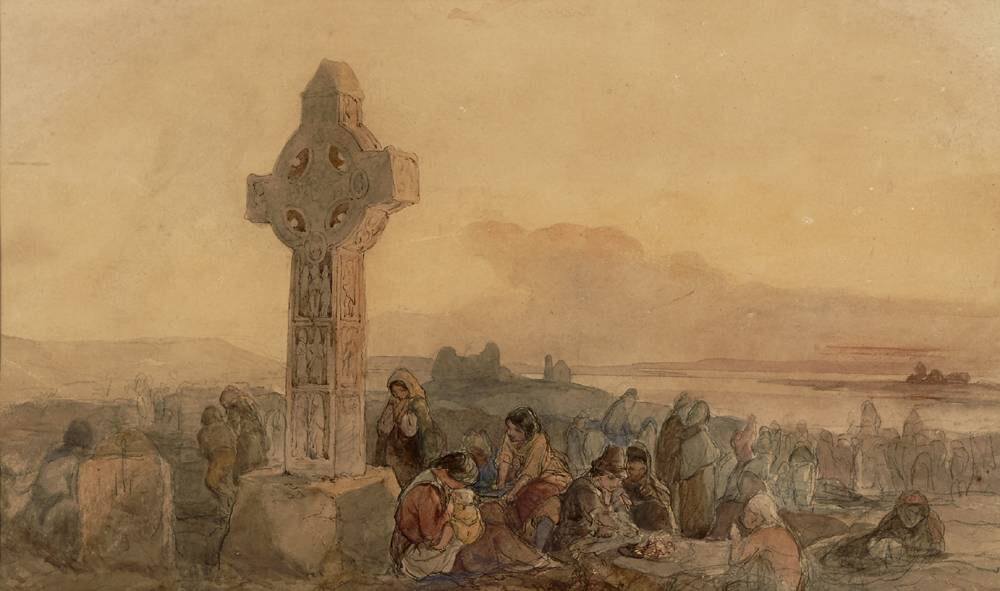As the world watches Dune, another of Frank Herbert’s novels might better anticipate some of the most important changes in Ireland’s religious landscape. The White Plague, Herbert’s novel of the Northern Ireland troubles, imagines a rogue scientist unleashing a virus that radically reshapes western societies – and, in Ireland, provokes radical religious change. As quarantines are imposed, and mobility is radically restricted, characters revive older forms of religious practice that make sense of a chaotic world.
Read during a pandemic, The White Plague is eerily prescient. In Ireland, successive lockdowns, which closed county and even national borders, have been accompanied by increasingly stringent controls on religious practice, and improvised responses. As politicians debate what constitutes an essential public service, few voices have been heard in defense of the importance of the religious communities that for centuries defined what it meant to be Irish. North of the border, where religious politics are still raw, the devolved administration in Belfast carefully encouraged churches to impose their own restrictions on worship. But south of the border, the Dublin government forcibly closed churches, forbidding baptisms and celebrations of the mass – which, critics of the government have not been slow to note, was a suppression of Catholic practice comparable only to that imposed by Oliver Cromwell.
The Dublin government’s refusal to recognize the importance of Christian worship is the latest symptom of Ireland’s sudden-onset secularization. The old Ireland – in which 2.5 million people turned out to see Pope John-Paul II during his 1979 visit – is now almost impossible to imagine. Since the mid-1990s, alongside a sequence of revelations of clerical abuse that seemed only ever to grow in horror, a raft of legislative changes have led to the decriminalization of same-sex sexual activity and divorce, the legalization of abortion and the introduction of same-sex marriage.
While recent census returns suggest that almost 78% of the republic’s citizen’s continue to identify as Catholic, the open-air mass led by Pope Francis, during his visit to Dublin in 2018, was an embarrassing disappointment to its organisers, attracting only around one-tenth of the number of those who had attended the Dublin mass that had been led by John-Paul II. Recent research by the Iona Institute has shown how lockdowns have led to a dramatic decline in mass attendance – suggesting that only one quarter of those who regularly attended mass before the pandemic now continue to do so.
So, while retaining some vestige of Catholic identity, Ireland has become one of the most progressive and secular countries in Europe. And the government’s response to Covid has both highlighted and accelerated this tendency – while also accelerating the development of new religious trends.
For there is another Ireland, which is re-inventing the idea of Christian tradition, as it resists these efforts to throw off traditional Christian teaching. The Catholic Church may be losing numbers, as its wider cultural influence collapses, but there still exists a large number of people who are determined to support claims about the relationship of church and state from which the church itself has moved away. In 2018, for example, the state held a referendum on its blasphemy laws. None of the Christian churches argued that these laws should be retained. The Irish Catholic Bishops Conference described the laws as “obsolete,” and did not support their retention. But over 35% – that is, over half a million – voters backed the retention of the constitutional ban on blasphemy, including 48% of voters in Donegal.
These religious traditionalists represents another “hidden Ireland,” a culture that the mainstream media cannot see and therefore regards as irrelevant. Operating outside the mainstream, these traditionalists are the victims of another partitioning of Ireland, the boundaries of which are marked out by Covid passes, lockdowns, and those unfashionable parts of the island that can be forgotten in the media mainstream.
For, outside the Pale, religious communities are improvising. Looking for clear leadership, some of the most traditionally minded Catholics are drifting to support smaller religious and political movements that clearly articulate their grievances and are able to coordinate their response. Many evangelical protestants, always less churchly and open to innovation, have responded to lockdowns by breaking congregations into smaller units, while others have simply decided to ignore government restrictions and to continue to meet as normal. But neither of these communities are obviously growing.
It might only be among the Orthodox that we can see signs of new life. For the Orthodox churches are growing – largely as a result of immigration from Ethiopia, Eritrea, and central and eastern Europe, but also as a result of conversions. The baptism, last winter, into the Romanian Orthodox Church of the environmentalist and novelist Paul Kingsnorth – an embrace of Christian religion that he recently described in the prominent Catholic journal, “First Things” – suggests that at least some of those conversions may not be intra-denominational transfers.
Frank Herbert’s The White Plague reminds us that religious practice is always changing – and suggests that it might be too soon to pronounce the death of Christian Ireland.
Crawford Gribben teaches at Queen’s University Belfast and is the author of several books on Irish, British and American religious history. His most recent book is The Rise and Fall of Christian Ireland.
The featured shows, “Pilgrims to Clonmacnoise Cross,” by Francis William Topham; watercolor, ca. 1845.
